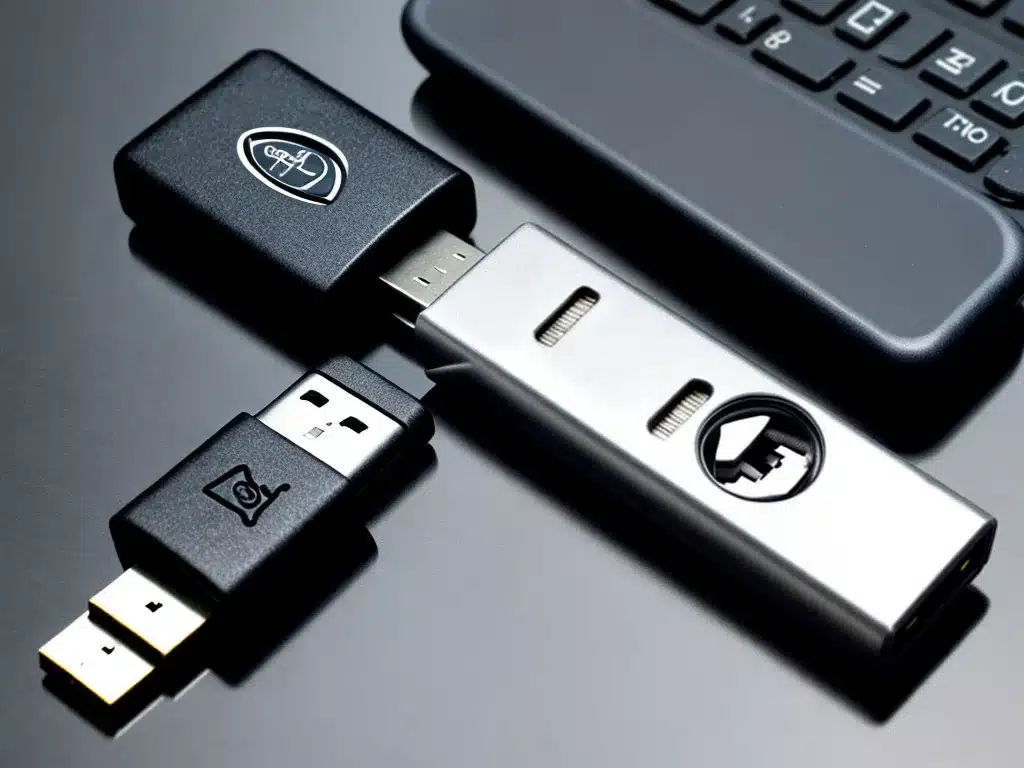
Security Risks Of Using USB Drives – And How To Avoid Them
USB drives, also known as flash drives or thumb drives, offer a convenient way to store and transfer data. However, they also pose security risks that users should be aware of. In this article, I will discuss the main security vulnerabilities of USB drives and provide tips on how to use them more safely.
Why USB Drives Can Be Risky
USB drives are small, portable, and can hold large amounts of data. This makes them vulnerable to the following security issues:
Malware Infection
Malware like viruses, worms, and spyware can spread through USB drives. When an infected drive is plugged into a computer, the malware automatically launches and infects the host device. The malware may then infect other drives that are plugged into the computer.
Data Theft
Sensitive files stored on a USB drive can easily be lost or stolen. If the drive falls into the wrong hands, confidential business data, passwords, and other private information can be accessed.
Data theft via USB drives can occur through:
- Losing the drive
- The drive being stolen
- Unauthorized copying of data from an unattended drive
Access By Unauthorized Users
USB drives are often used across multiple computers, some of which may not be trustworthy. If you use a drive on a public or borrowed computer, malicious software on that computer can infect your drive or copy data from it without your knowledge.
Plugging your drive into an untrusted computer also allows anyone with physical access to that computer to access unprotected data on the drive.
Best Practices For Using USB Drives Securely
Here are some tips to keep your data more secure when using USB drives:
1. Encrypt the USB Drive
Full-disk encryption technologies like BitLocker (Windows) and FileVault (Mac) encrypt the entire contents of the drive. If the encrypted drive is lost or stolen, the data will be inaccessible without the password.
Some flash drives come with built-in encryption software for more convenience. Encrypting your drive is the best way to prevent unauthorized data access.
2. Password Protect Sensitive Files
Even on an encrypted drive, you may wish to add a second layer of security for your most sensitive documents. Use archive software like 7-Zip or WinRAR to compress files and set a password for accessing them.
This provides additional protection in case your drive encryption is compromised.
3. Use Antivirus Software
Install antivirus software on all computers where you use your USB drive. Scan the drive each time you plug it in to check for malware.
The antivirus will quarantine or delete any infected files to prevent malware spreading through the drive.
4. Back Up Important Data
Back up your USB drive data onto another secure location like an external hard drive or cloud storage. Backups ensure you won’t lose important data if your drive is damaged, lost or stolen.
5. Avoid Unfamiliar Computers
Only use your USB drive on personal and trusted computers. Never plug it into public computers like in hotels, cafes or libraries, which carry a higher risk of malware infection.
6. Safely Eject The Drive
Don’t just pull out your USB drive when you’re done. Properly eject it first to ensure all writes to the drive are completed. This avoids data corruption.
On Windows, use the Safely Remove Hardware icon before unplugging. On Mac, eject the drive through Finder before removing it.
The Bottom Line
USB drives provide a quick, convenient way to transfer and transport files. However, in the wrong hands they can also leak sensitive data. By encrypting your drive, scanning it with antivirus software, and following other best practices, you can use USB drives more securely.
The minimal effort required to better protect your flash drive is worthwhile to keep your important information safe from data thieves and malware.












